Cetaceans concern in marine entertainment where they are made to live in tanks
Contents
Life for captive cetaceans may appear harmless and the shows exciting, however in reality it is a different story. These facilities only exist to provide public entertainment and to generate profit. Their main motive is to just mint money by manipulating the aquatic life. There is little or no emphasis on education about the species on display nor about their conservation.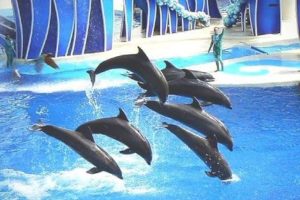 Wild orcas and dolphins live in large, complex social groups and swim vast distances every day in the open ocean. In captivity, these animals can only swim in endless circles in tanks that are the equivalent of bathtubs.Thus they are denied the opportunity to engage in almost any natural behavior. They are forced to perform meaningless tricks and often torn away from family members when they’re shuffled between parks. Most of these beautiful creatures die far short of their natural life spans.
Wild orcas and dolphins live in large, complex social groups and swim vast distances every day in the open ocean. In captivity, these animals can only swim in endless circles in tanks that are the equivalent of bathtubs.Thus they are denied the opportunity to engage in almost any natural behavior. They are forced to perform meaningless tricks and often torn away from family members when they’re shuffled between parks. Most of these beautiful creatures die far short of their natural life spans.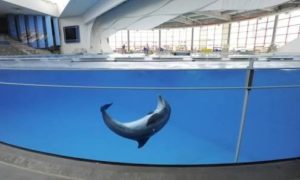 Even the largest tank is only a tiny fraction of the size of the natural home ranges these marine mammals have in the wild. Life for captive dolphins and whales bears no comparison to the lives of their wild counterparts in the ocean. The latter spends 10-20% of their time at the surface whereas in captivity it is increased to at least 70%.They are restricted by walls in the tanks thereby unable to travel at speed or depth for any distance and are denied everything that is natural and important to them. A captive environment cannot provide adequate stimulation for these social, intelligent, large brained, complex marine mammals which, in the wild, would live in inter-related family social groups.
Even the largest tank is only a tiny fraction of the size of the natural home ranges these marine mammals have in the wild. Life for captive dolphins and whales bears no comparison to the lives of their wild counterparts in the ocean. The latter spends 10-20% of their time at the surface whereas in captivity it is increased to at least 70%.They are restricted by walls in the tanks thereby unable to travel at speed or depth for any distance and are denied everything that is natural and important to them. A captive environment cannot provide adequate stimulation for these social, intelligent, large brained, complex marine mammals which, in the wild, would live in inter-related family social groups.
As controversy over marine captivity has heightened, some attractions are eliminating or scaling back dolphin shows and facing government crackdowns on whale breeding.
The long-running debate over keeping marine mammals in captivity was brought into the spotlight after last year’s documentary “Blackfish,” which cast SeaWorld in a harsh light.
In France, the new law prohibits keeping any cetacean captive, with the ultimate goal being to entirely shut down the archaic industry. For those unfortunate individuals who are already held captive at facilities such as Marineland Antibes in the French Riviera, the legislation stipulates that no captive breeding can be done. It also prohibits direct contact between captive cetaceans and humans—putting an end to swim-with-dolphins programs—and requires that pools and tanks be made “significantly larger.”
After effects that are not being considered – Families Torn Apart :
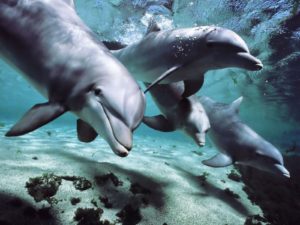 Countless marine animals have been taken from their rightful ocean homes and placed in tanks (even the original Shamu was stolen from the wild). Tilikum, the orca who lashed out and killed SeaWorld trainer Dawn Brancheau and two other people, has been in a cramped tank for more than 30 years since he was taken away from his Icelandic family. Lolita, torn from her family when she was just a baby, has existed in the same tank at the Miami Seaquarium for nearly half a century. Some countries, including Russia, Cuba, and Japan, continue to capture wild dolphins and whales.
Countless marine animals have been taken from their rightful ocean homes and placed in tanks (even the original Shamu was stolen from the wild). Tilikum, the orca who lashed out and killed SeaWorld trainer Dawn Brancheau and two other people, has been in a cramped tank for more than 30 years since he was taken away from his Icelandic family. Lolita, torn from her family when she was just a baby, has existed in the same tank at the Miami Seaquarium for nearly half a century. Some countries, including Russia, Cuba, and Japan, continue to capture wild dolphins and whales.
Captivity’s Tragic Consequences :
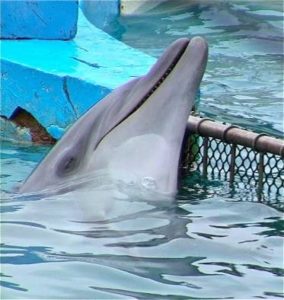 Orcas and other dolphins navigate by echolocation, but in pools, the reverberations from their own sonar bounce off the walls, which can drive them insane. World-renowned oceanographer Jean-Michel Cousteau compared the keeping of orcas in tanks to “a person being blindfolded in a jail cell.”
Orcas and other dolphins navigate by echolocation, but in pools, the reverberations from their own sonar bounce off the walls, which can drive them insane. World-renowned oceanographer Jean-Michel Cousteau compared the keeping of orcas in tanks to “a person being blindfolded in a jail cell.”
Captive orcas suffer physically as much as they do psychologically. Some orcas have destroyed their teeth by chewing on metal cage bars and all captive adult male orcas have collapsed dorsal fins, a condition that rarely occurs in wild orcas.
The Trouble With ‘Interactive’ Programs :

Touch tanks and “swim-with” programs allow the public to pet, kiss, or even “ride” dolphins. Such programs invade the animals’ already diminished worlds and are intrusive, stressful, and even dangerous for the animals, as well as being risky for human participants, too. Visitors to Connecticut’s Mystic Aquarium can pay to “paint” with belugas and the facility shamelessly spins the profitable program as “enriching” for the whales. Animals in “petting pools” are frequently exposed to foreign bacteria and other pathogens, and they can become anxious, frustrated, aggressive, and even neurotic as a result of being confined to shallow tanks and exposure to constant interaction with humans.
Members of the public have been injured at SeaWorld’s dolphin-petting pools. Even programs that enable people to swim with dolphins in the wild can be invasive. Boats and swimmers may chase, harass, and scare animals, upsetting their natural feeding, resting, migrating, and playing behavior.
Poor Government Regulations :
Captive marine mammals have some federal protections in the United States, but enforcement is lax. The U.S. Department of Agriculture has 126 inspectors responsible for inspecting 10,433 facilities every year, and even chronic violators are rarely assessed fines or meaningful penalties.
Keeping Dolphins Free :
An Emory University scientist determined that the relative brain size of many dolphin and whale species is second only to that of modern humans and that the complexity of the neocortex of many dolphins and whales, including orcas, is comparable to and perhaps exceeds that of the modern human brain.
Other studies have revealed that dolphins have distinct personalities, a strong sense of self, and the ability to consider the future. Research has also shown that behavior adaptation is passed from one dolphin to another.
Governments around the world are recognizing that dolphins, orcas, and other cetaceans do not belong in tanks. Chile, Costa Rica, and Croatia all have banned the keeping of cetaceans in captivity. In 2013, India’s Ministry of Environment & Forests banned the keeping of captive dolphins for public entertainment. Other countries, including Brazil, Luxembourg, Nicaragua, and Norway, have highly restrictive standards that make it nearly impossible to keep cetaceans in captivity. The last dolphinarium in the U.K. closed more than 20 years ago.
Yes! Now these were some new shocking facts but – What You Can Do :
Please don’t visit marine parks, zoos, or aquariums that keep ocean animals in captivity. Encourage your local aquarium to create more space for rehabilitating (and releasing) injured wildlife by refusing to breed or bring in any more animals.
You can also leaflet at local aquariums or marine parks, pressure officials to avoid subsidizing these facilities with taxpayer money, write letters to the editor of local publications, and support legislation that prohibits the capture or restricts the display of marine mammals.
–Shreesha Balan
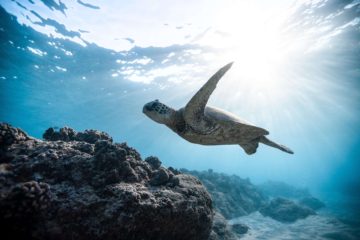
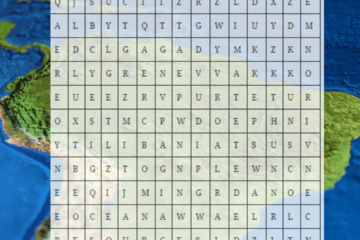

0 Comments